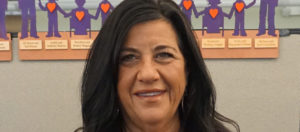Children Awaiting Parents’ executive director talks about uniting children and their new parents
Interview by Mike Costanza

Children Awaiting Parents and its placement arm, the Donald J. Corbett Adoption Agency, help children who have long been in foster care find loving, permanent homes. Lauri McKnight, the Rochester nonprofit’s executive director, sat down with In Good Health to talk about its mission, and the processes by which it helps bring children and deserving parents together. McKnight has headed the organization since October 2018.
Q. What is the mission of Children Awaiting Parents (CAP)?
A. We primarily place children in loving, permanent homes who have been in the foster care system in loving, permanent homes. Often, the children have been in foster care for three or more — and typically many more — years.
Q. The children your nonprofit works with have been in foster care with various county agencies in Central and Western New York. Are these kids special in some ways?
A. Our agency serves primarily children who are a little bit older — somewhere around the age of 8 or 10 up through 21 — who may have disabilities, who may have been abused, maltreated, abandoned — any of those things.
Q. When CAP was founded in 1972, its ability to serve children who were in foster care and those who wanted to adopt them was much more limited than it is now. Can you give some details about those limitations?
A. The only thing they [CAP’s staff] could do was provide advocacy for those children — try to get them promoted, visible. They were able to connect a family and a child, but because CAP was not a state-licensed agency, they were unable to do anything more than match the family and children. Other agencies had to do the placement, the placement services, and the finalization of the adoption.
Q. In 2017, CAP created the Donald J. Corbett Adoption Agency to replace the outside agencies that once did the nuts-and-bolts of actual adoption. What steps does that agency undertake as part of the adoption process?
A. A parent who is interested in adoption would first come to our office for an informational meeting with our adoption specialist to learn about the process, the fees, what adoption would entail and what training looks like. They can also learn a lot from a parenting guide book. The next step for them would be to enroll in the training which is a 10-week series of informational and educational classes on what children need, what trauma looks like for these children, how to best parent these children and what you can expect from adoption. At the same time, we are assessing the family to be sure that we think this is a family that could handle one of the children. We want to be sure that this family is going to be able to manage it and is the right family for a child with these situations that I’ve mentioned. Once that 10-week series is over, the parent decides to go forward or not to continue this process.
Q. If a potential parent wants to continue the adoption process, and is considered a right fit for one of your children at this point, what happens next?
A. Extensive clearance and background checks. There has to be a New York state clearance to make sure that there are no child protective issues, or a history of criminal activity. They have to be fingerprinted, and also checked through a clearance system to be sure that they have not harmed a child through any kind of work that they did.
Q. If the parents pass those background checks, what’s the next step in the process?
A. A home study is written. This is an extensive process where the home is inspected, the family’s background and their story are then written into a narrative which will then be available for a review by any county and the New York State Office of Children and Family Services. Once a family is trained, their home study is completed and everything’s in place, they’re certified adoptive.
Q. Once a family is certified, what’s the next in the adoption process?
A. Now, the family is ready for search-and-match. That is where a staff member spends a pretty extensive amount of time reading the home study of the family and then searching with the family for a child that fits what they’re looking for and fits their home. We’re looking for a child that fits the home and a family that fits the child.
Once we’ve found that child, then we present the home study to the custodial county. Then, a selection meeting happens with two or three families, and the custodial county chooses a family. If our family is selected, we start the process of getting the family and the child to know one another through phone or Skype or Facetime. The family then goes to visit the child wherever they are, and the child visits the family in New York. If all goes well, that child will be legally placed in that home for a period of six months minimum, until finalization happens in court. Finalization is based on the readiness of the child and the family. Since October of 2018, we’ve placed 13 children in permanent homes.
Q. What services does your nonprofit provide for adoptive parents?
A. I actually have like a three-page menu of services. It includes training in parenting skills, twice-monthly home monitoring and supervision, family sessions with a licensed social worker, a support group for the families and help navigating the educational system. The children receive training in the skills they need to live in the family and do well in life.
Q. How big is CAP?
A. We have six full-time and two part-time staff. Our annual budget averages $500,000.

